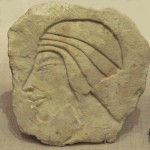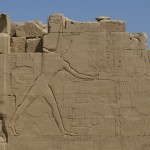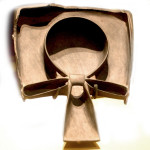
Read Like an Egyptian — Art in Ancient Egypt, Part 1
Probably only one percent of the ancient Egyptians were literate, and those literate few were royalty, nobility, upper-crust managers and administrators, at least some of the top military people, full-time priests and scribes. But many people could “read” what they were seeing, and understand it without knowing how to read hieroglyphs. The ideas and symbolic iconography were grounded in their culture; the art spoke to them even if their knowledge of the written text was, for the vast majority of the public, rudimentary at best — no doubt limited to a few basic glyphs. [more…]

Egyptologically Speaking: Interview with Dr Garry Shaw about his book “The Egyptian Myths”
In March 2014, Dr Garry Shaw’s new book was published in hardback. The Egyptian Myths: A Guide to Ancient Gods and Legends is Dr Shaw’s third sole-authored book, and his second aimed at the general public. An introductory guide to ancient Egypt’s myths, it does not duplicate existing books, offering instead a different way of approaching the central beliefs that made up Egypt’s formal religion. In this interview Dr Shaw discusses both his book and future projects. The questions were contributed by a number of readers, both from Egyptological and from Egyptological’s Facebook page, for which many thanks. [more…]
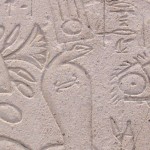
Meretseger: She Who Loves Silence. The Cobra Deity at Deir el-Medina
In the Western world the cobra rarely inspires sentiments of benevolence, warmth or good intentions. It is not a cuddly beast. Matters were more ambivalent in ancient Egypt where a range of wild animals were identified with deities imbued with admired values of physical strength, protection and courage, as well as less obviously admirable qualities like aggression, retribution, vengeance and retaliation. Like Sobek, the crocodile deity, and Sekhmet the lioness, the cobra deities comprised a mixture of attributes that centred on their fierce ability to defend themselves and to strike, hissing and spitting poison, to annihilate their aggressors. [more…]
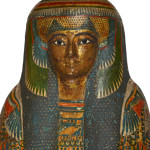
A visit to the British Museum’s exhibition “Ancient Lives. New Discoveries”
By Andrea Byrnes. Published in Egyptological, Magazine Reviews. 16th June 2014 Ancient Lives. New Discoveries British Museum Exhibition dates: 22nd May – 30th November 2014 Sponsored by Julius Baer; Technology Partner – Samsung When I arrived home after visiting and enjoying Ancient Lives, I found that a friend who has also visited the […] [more…]

The Significance of the Crossed Arms Pose – Part 2: Osiris, The Osiris and the Osirides
Is it a futile activity to ask, as I do in this series of articles, “What is The Significance of the Crossed-Arm Pose?” It might be argued, for instance, that variations in the pose at death exhibited by royal mummies simply reflect what embalmers decided to do on the day, or at least the customary practice of a particular undertaker. Similarly, it might be argued that each individual anthropoid coffin might be expected to reveal some unique design characteristic, and that no significance should be attached to the specific hand/arm pose depicted on the lid. [more…]
Edition - April, 2013
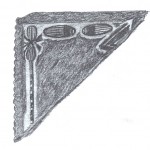
The goddess Neith in the Early Dynastic period
The goddess Neith was one of Egypt’s oldest deities, very well documented from the Early Dynastic period, when Egypt was first brought together as a unified country. She is very familiar from later periods, particularly in the New Kingdom and Third Intermediate periods (figure 1). Over the millennia she was endowed with numerous attributes: a creation goddess, a sky goddess, a protector of the king (with Isis, Nephthy and Serket), protector of one of the Four Sons of Horus, the mother of Sobek, and the consort of Seth, occasionally associated with snake, cow and pig. So where did this great deity come from? The earliest evidence to allow the formation of a coherent picture is Early Dynastic. [more…]
Edition - July, 2012

Babi: Bull of the Baboons
By Andrea Byrnes. Published on Egyptological, In Brief, 26th July 2012 Ferocious and alarming, baboons are amongst nature’s aggressive species. With vast teeth, which they are all too willing to display, brightly coloured rear quarters and loud, screeching voices, they make an impression. They are also sociable animals, at least amongst themselves, forming tight […] [more…]
 By
By 